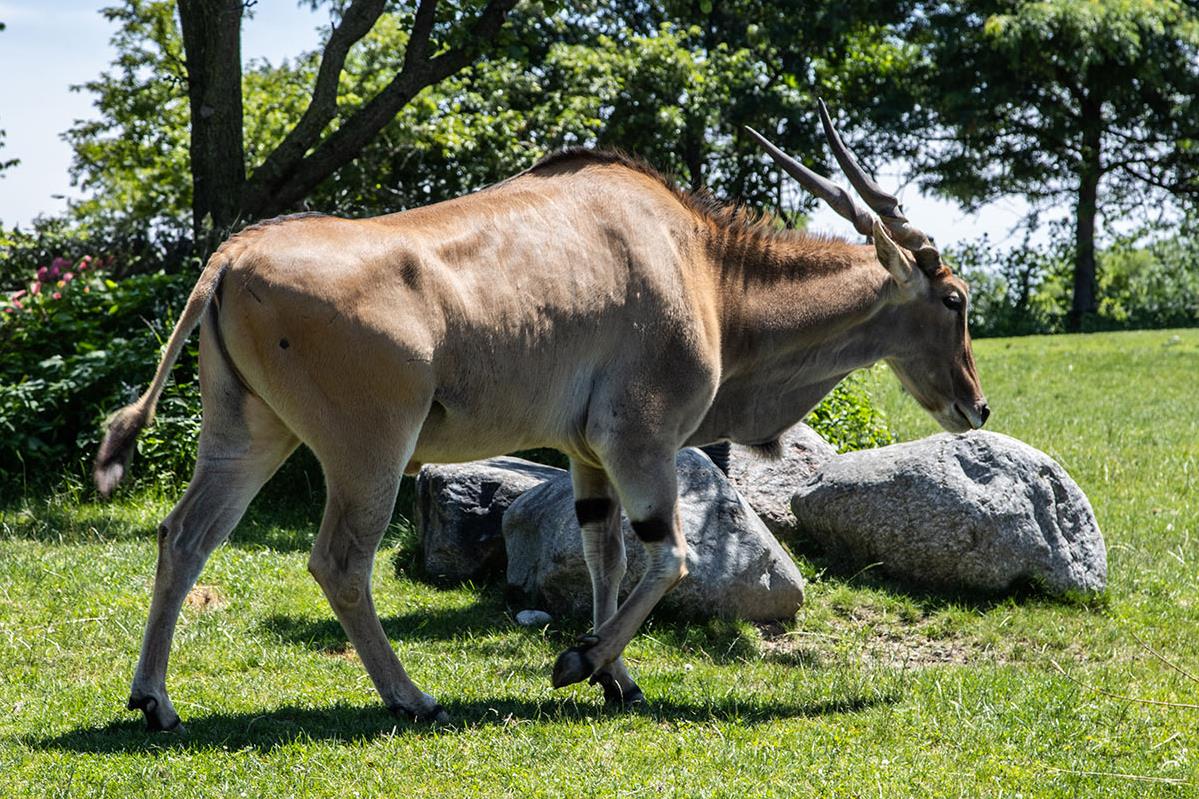Common Eland
Tragelaphusoryx
Order: Artiodactyla
Family: Bovidae
Genus: Tragelaphus
The common eland is the largest living antelope and is stocky and heavy-bodied; mature males can weigh over 900 kg (females are significantly lighter: less than 600 kg). The coat is tan-coloured with scattered (sometimes indistinct) vertical white stripes. Both sexes have distinctively twisted horns, which grow up to 70 cm long (they are thicker in males). A dewlap (skin flap) on the lower throat has a brush of dark hair, and in old males it becomes especially pendulous. Mature males can also be recognized by a “wig” of dark, shaggy hair on their foreheads.
Head and body length: 200-340 cm
Height at shoulder: 125-183 cm
Tail length: 50-75 cm
Weight: 400-942 kg (males); 390-600 kg (females)
Conservation Status: IUCN
Distribution
Common eland are found across eastern and southern Africa
Habitat
Common eland inhabit a range of habitats, including grasslands, savannas, woodlands, and semideserts. They are highly adaptable and can be found at various altitudes, from sea level to mountains up to 4,600 m above sea level.
Diet
They are herbivores, feeding on grasses, leaves, fruits, and browse. Their small, narrow mouths allow them to be highly selective in choosing the plants that they eat. Their diet varies based on the availability and seasonality of food in their habitats.
Reproduction
Common eland reach sexual maturity at around two years of age. They may breed throughout the year, but there tends to be a regional peak in births at the end of the dry season and beginning of the rainy season. Females usually give birth to a single calf after a gestation period of about 8 to 9 months. Calves are precocial and can stand and walk shortly after birth. Young eland are highly social and congregate in creches of similarly-aged animals – they seem to have more of an attachment to each other than to their mothers. Females participate in cooperative defense of their young, banding together to chase away predators.
Adaptation
The common eland is a nomadic species. Herd size varies widely depending on habitat type and season, and may be as small as 2-5 individuals or 25-70 (sometimes up to 400 animals) wander over large areas searching for the best foraging opportunities. The species is not desert-adapted but has numerous water-saving and temperature-regulating adaptations. In hot weather, they allow their body temperature to rise during the day, dissipating the heat at night. Their kidneys are good at conserving water by concentrating their urine, and they can alter their metabolic rate and slow their breathing to reduce water loss. . Common eland are agile runners, capable of maintaining speeds of 35 km/h over several kilometers, or reaching speeds of up to 70 km/h over short distances. Despite their large size, they are also impressive jumpers and are able to leap nearly 2 meters in the air from a standing start.
Threats to Survival
Threats to the common eland include habitat loss due to human activities, hunting, and competition with livestock for resources. Their principal predators are large carnivores like lions and hyenas.















